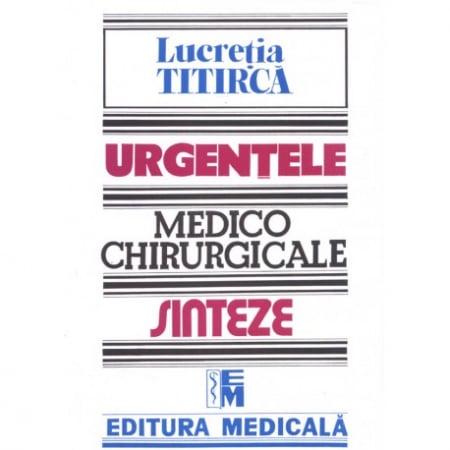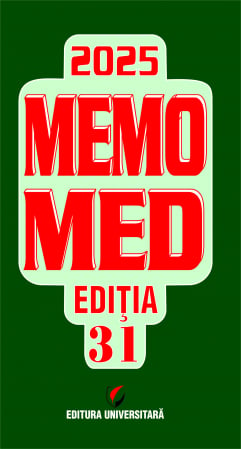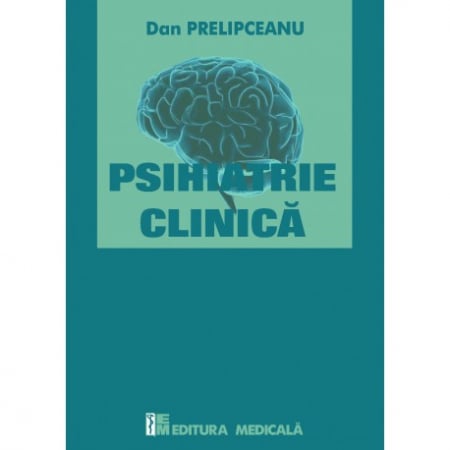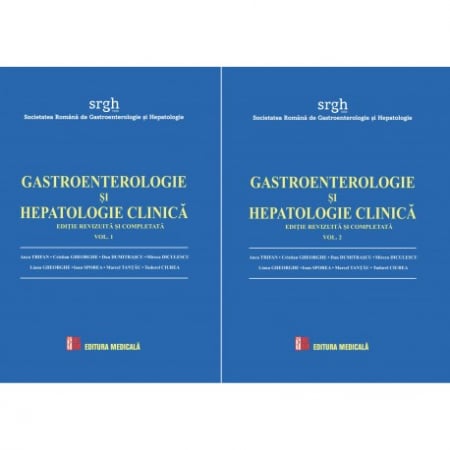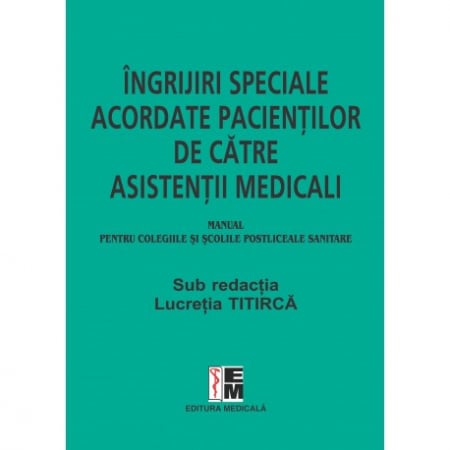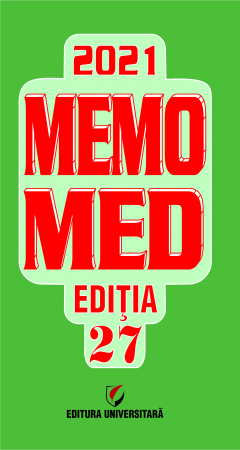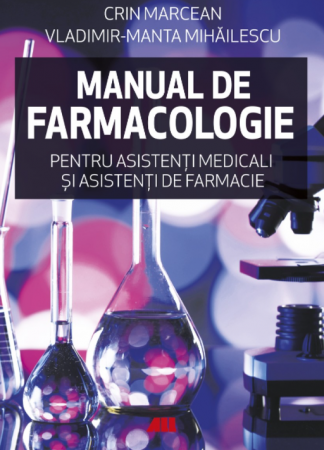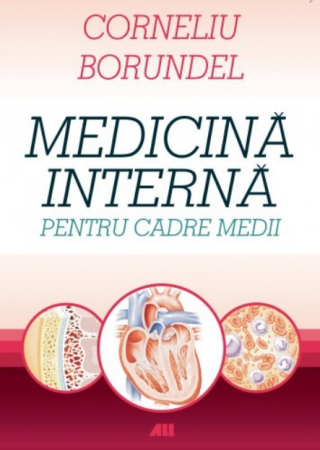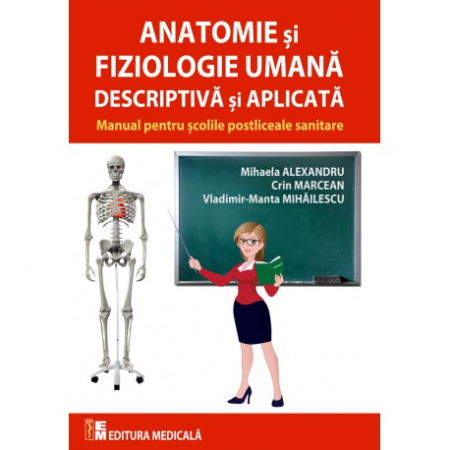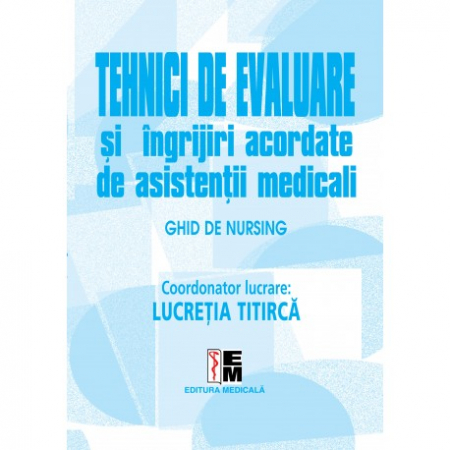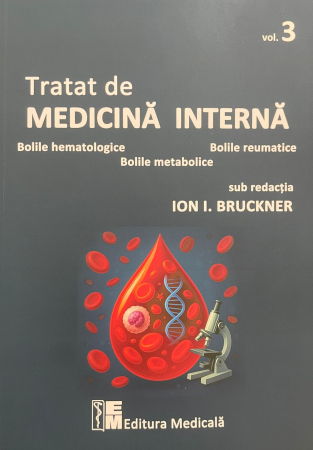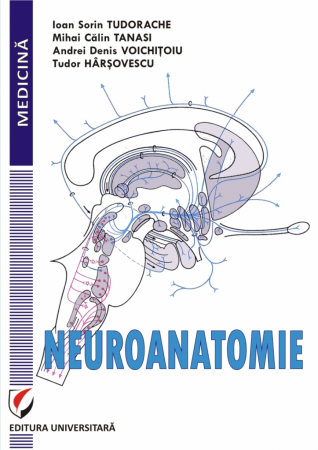Manuscript proposals: [email protected] / 0745 204 115 //// Tracking orders Individuals / Sales: 0745 200 357 / Orders Legal entities: 0721 722 783
ISBN: 978-606-28-1279-9
DOI: 10.5682/9786062812799
Publisher year: 2021
Edition: I
Pages:
Publisher: Editura Universitară
Author: Bogdan Nicolae Manolescu
Product Code:
9786062812799
Do you need help?
0745 200 357
- Authors
- Content
- More details
- Reviews (0)
BOGDAN NICOLAE MANOLESCU
Biomedical sciences are among the most dynamic fields. The pandemic caused by the spread of the latest coronavirus was a good opportunity to illustrate this point once again. On December 26, 2019, one of the hospitals in Wuhan (China) was hospitalized with the first patient infected with what would later become known as the SARS-CoV-2 virus. The article "A new coronavirus associated with human respiratory disease in China" (Nature, 579, 265, 2020) was published on February 3, 2020, describing the genome sequence of this virus (29,903 nucleotides). On December 11, 2020, the FDA (Food and Drug Administration) urgently authorized the use of the first vaccine (Pfizer-BioNTech) to immunize people over the age of 16 from the SARS-CoV-2 virus. Finally, on May 10, 2021, the FDA extended the authorization for the use of this vaccine to children between the ages of 12 and 15. Despite the reluctance caused by poor information in general, research into the use of messenger RNA to obtain vaccines is not a new direction of research, but dates back to the 1990s. The beginnings of studies in this area are related to the names of American researchers Katalin Karikó, Drew Weissman and Robert Langer. It is very likely that in December 2021 we will find some of these names among the winners of the Nobel Prize in Medicine and Physiology. This sequence of events would not have been possible without biochemistry, biotechnology, molecular biology and genetics.
Sometimes the speed with which new discoveries in biochemistry appear is so great that we can't keep up. While writing this paper, I was surprised to learn that a group of researchers at Georg August University (Göttingen, Germany) have described a new type of covalent bond that forms between the side chains of the amino acids cysteine and lysine. , 593, 460, 2021). Obviously, it was impossible for me to add this information in Chapter 3, because it had already been edited. I will definitely do it in a future edition of this paper.
At other times, new discoveries can have a profound impact on an entire field. It is now known that only proteins and lipids can be modified by attaching glycans. Therefore, the news of the publication in the journal Cell, in May of this year, of an article describing the first RNA molecules modified by glycosylation caused a huge surprise in the international scientific community. If this finding is to be validated by further studies, an analysis of how the glycosylation process is presented in the various textbooks of biochemistry and cell biology will be required.
The writing of this paper came somewhat naturally as a result of the experience gained in 15 years of teaching various aspects of biochemistry to both undergraduate and master's students. The courses and the practical works put me in the position to rethink the way of approaching some concepts. The solutions came from the most unexpected places. For example, the Icelandic film About humans and sheep (Hrútar, 2015) offered me the idea of an attractive alternative for teaching aspects related to the three-dimensional structure of proteins.
I have been writing this textbook for almost five years, and during this time I have often thought about the opportunity to publish it. At present we have access to a series of excellent biochemistry textbooks with a wide international circulation. So what's the point of another biochemistry textbook? I think that the Romanian university environment would need such a paper. The elaboration of this manual was quite difficult. In addition to the basics, I tried to include a number of recent information, which involved consulting a significant number of articles. Sure, glycolysis, oxidative decarboxylation of pyruvate, and the tricarboxylic acid cycle are the same, but in the absence of the novelty, this book would have been just another biochemistry textbook. I tried to make a judicious selection of the information and to present it in a clear and accessible form. In addition, to facilitate understanding, I chose to support the text with numerous tables and images, some original, others reproduced from databases and articles. Only time will tell if my approach will be successful or not. Also, the opinions and suggestions of fellow biochemists and chemists will help to improve a possible later edition.
Terminology was an issue I encountered during the development of this manual. From my point of view, translating established terms from English into Romanian is not the most appropriate approach. Sometimes, at least bizarre, if not hilarious, situations can arise. For example, some Romanian textbooks translate the term scavenger receptors as garbage receivers. I personally totally disapprove of such a translation and discourage it. Therefore, when writing this manual, I largely opted for the use of English terminology.
Biochemistry, like any other science, is not just a sum of concepts, theories and scientific data. All of this has been discovered and developed by humans. The documentation for writing this manual gave me the opportunity to get an idea of the life stories of more or less well-known researchers. Some of these stories are downright tragic, like that of Jakub Parnas, while others tell us about man's determination to overcome any obstacles to knowledge. This is also the reason why I chose to indicate the name of as many researchers as possible throughout this paper.
For technical reasons, the written material will be published in two volumes. The first of these describes basic aspects and gives an overview of the main classes of biomolecules (amino acids, peptides, proteins, carbohydrates, lipids and nitrogenous bases and their derivatives). In addition, the chapter on lipids also benefits from a substantial subchapter on biological membranes. There are also two additional chapters on membrane transport and intercellular signaling. The second volume presents the presentation of metabolic pathways, as well as the way in which cells obtain their energy (energy metabolism). Finally, as biochemistry cannot be separated from pathology, we have inserted throughout this paper a series of clinical correlations that we have considered relevant in certain contexts. Although this textbook focuses on human biochemistry, it also covers aspects of microbial and even plant biochemistry.
From my point of view, this paper has a very wide addressability. It can be used by students of the faculties of Biology, Chemistry, Medicine and Chemical Engineering. Of course, depending on the profile, only certain concepts should be judiciously selected.
In conclusion, I would like to thank my colleagues, Dr. Conf. Dr. Anca Marton (Department of Organic Chemistry "C. Nenitescu", Faculty of Applied Chemistry and Materials Science, POLYTECHNIC University of Bucharest) and Conf. Dr. Ileana Farcasanu (Department of Organic Chemistry, Biochemistry and Catalysis, Faculty of Chemistry, University of Bucharest) for the critical review of the material I wrote, as well as for the constructive discussions that helped me to improve many aspects. I would also like to thank Mrs. Ameluta Visan (University Publishing House) who had a fundamental contribution in the technical editing of this paper and in the editing of all the images taken from various sources.
Bogdan Nicolae Manolescu
Sometimes the speed with which new discoveries in biochemistry appear is so great that we can't keep up. While writing this paper, I was surprised to learn that a group of researchers at Georg August University (Göttingen, Germany) have described a new type of covalent bond that forms between the side chains of the amino acids cysteine and lysine. , 593, 460, 2021). Obviously, it was impossible for me to add this information in Chapter 3, because it had already been edited. I will definitely do it in a future edition of this paper.
At other times, new discoveries can have a profound impact on an entire field. It is now known that only proteins and lipids can be modified by attaching glycans. Therefore, the news of the publication in the journal Cell, in May of this year, of an article describing the first RNA molecules modified by glycosylation caused a huge surprise in the international scientific community. If this finding is to be validated by further studies, an analysis of how the glycosylation process is presented in the various textbooks of biochemistry and cell biology will be required.
The writing of this paper came somewhat naturally as a result of the experience gained in 15 years of teaching various aspects of biochemistry to both undergraduate and master's students. The courses and the practical works put me in the position to rethink the way of approaching some concepts. The solutions came from the most unexpected places. For example, the Icelandic film About humans and sheep (Hrútar, 2015) offered me the idea of an attractive alternative for teaching aspects related to the three-dimensional structure of proteins.
I have been writing this textbook for almost five years, and during this time I have often thought about the opportunity to publish it. At present we have access to a series of excellent biochemistry textbooks with a wide international circulation. So what's the point of another biochemistry textbook? I think that the Romanian university environment would need such a paper. The elaboration of this manual was quite difficult. In addition to the basics, I tried to include a number of recent information, which involved consulting a significant number of articles. Sure, glycolysis, oxidative decarboxylation of pyruvate, and the tricarboxylic acid cycle are the same, but in the absence of the novelty, this book would have been just another biochemistry textbook. I tried to make a judicious selection of the information and to present it in a clear and accessible form. In addition, to facilitate understanding, I chose to support the text with numerous tables and images, some original, others reproduced from databases and articles. Only time will tell if my approach will be successful or not. Also, the opinions and suggestions of fellow biochemists and chemists will help to improve a possible later edition.
Terminology was an issue I encountered during the development of this manual. From my point of view, translating established terms from English into Romanian is not the most appropriate approach. Sometimes, at least bizarre, if not hilarious, situations can arise. For example, some Romanian textbooks translate the term scavenger receptors as garbage receivers. I personally totally disapprove of such a translation and discourage it. Therefore, when writing this manual, I largely opted for the use of English terminology.
Biochemistry, like any other science, is not just a sum of concepts, theories and scientific data. All of this has been discovered and developed by humans. The documentation for writing this manual gave me the opportunity to get an idea of the life stories of more or less well-known researchers. Some of these stories are downright tragic, like that of Jakub Parnas, while others tell us about man's determination to overcome any obstacles to knowledge. This is also the reason why I chose to indicate the name of as many researchers as possible throughout this paper.
For technical reasons, the written material will be published in two volumes. The first of these describes basic aspects and gives an overview of the main classes of biomolecules (amino acids, peptides, proteins, carbohydrates, lipids and nitrogenous bases and their derivatives). In addition, the chapter on lipids also benefits from a substantial subchapter on biological membranes. There are also two additional chapters on membrane transport and intercellular signaling. The second volume presents the presentation of metabolic pathways, as well as the way in which cells obtain their energy (energy metabolism). Finally, as biochemistry cannot be separated from pathology, we have inserted throughout this paper a series of clinical correlations that we have considered relevant in certain contexts. Although this textbook focuses on human biochemistry, it also covers aspects of microbial and even plant biochemistry.
From my point of view, this paper has a very wide addressability. It can be used by students of the faculties of Biology, Chemistry, Medicine and Chemical Engineering. Of course, depending on the profile, only certain concepts should be judiciously selected.
In conclusion, I would like to thank my colleagues, Dr. Conf. Dr. Anca Marton (Department of Organic Chemistry "C. Nenitescu", Faculty of Applied Chemistry and Materials Science, POLYTECHNIC University of Bucharest) and Conf. Dr. Ileana Farcasanu (Department of Organic Chemistry, Biochemistry and Catalysis, Faculty of Chemistry, University of Bucharest) for the critical review of the material I wrote, as well as for the constructive discussions that helped me to improve many aspects. I would also like to thank Mrs. Ameluta Visan (University Publishing House) who had a fundamental contribution in the technical editing of this paper and in the editing of all the images taken from various sources.
Bogdan Nicolae Manolescu
If you want to express your opinion about this product you can add a review.
write a review

6359.png)
![Biochemistry. Volume I. Descriptive biochemistry and principles of cell signaling [1] Biochemistry. Volume I. Descriptive biochemistry and principles of cell signaling [1]](https://gomagcdn.ro/domains/editurauniversitara.ro/files/product/large/manolescu-bogdan_biochimie_bt-3215-8576.jpg)
